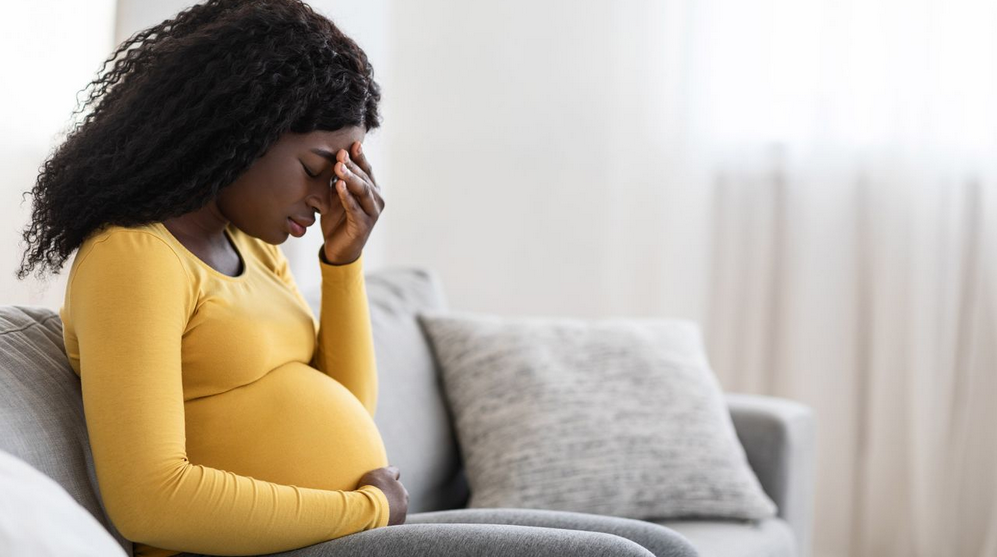It can seem overwhelming to expectant mothers when they face the prospect of being pregnant, work, an unstable economy and the risks of Covid-19. But if it’s possible, expectant mothers should try to take stock of their mental stress and reach out for help to reduce how often their newborn is likely to experience negative emotions, according to a new study. The study, published Wednesday in the journal Infancy , found babies of moms who experienced more fluctuations in stress during pregnancy showed more fear, sadness and distress at 3 months than those of moms who were less stressed. Women with higher fluctuations were more likely to report that their babies often seemed angry, crying or fussing when left in a crib; showed distress when they were tired; and clung to a parent when introduced to an unfamiliar adult, the study said.
We realize that babies encountering constant feeling of the pressure reaction framework (persistently raised cortisol), or ‘harmful pressure,’ without the cradle of a mindful grown-up affect early mental health, insusceptible framework and epigenetics,” said Dr. Marian Earls, seat of the American Academy of Pediatrics Council on Healthy Mental and Emotional Development, in an email. She was not engaged with the review.
Research on babies of moms with post pregnancy anxiety reveals insight into other possible effects too. For instance, offspring of discouraged moms are bound to have more significant levels of the pressure chemical cortisol as preschoolers, “and these progressions in levels are connected with uneasiness, social attentiveness, and withdrawal,” as per the AAP’s arrangement proclamation on wretchedness after birth.
These kids might have “unfortunate restraint, unfortunate companion connections, school issues, and animosity,” as well as relational issues, conduct issues, and discouragement and other temperament problems, the assertion said.
Notwithstanding, a recent report viewed that as assuming a youngster has a mindful grown-up that can give a protected and stable sustaining relationship, numerous youth misfortunes can be changed.
Gathering pressure information progressively
Specialists had 72 ladies complete reviews about their feelings of anxiety up to four times each day north of a 14-week duration during pregnancy. At the point when their children turned 3 months old, moms finished up the Infant Behavior Questionnaire, a review that actions baby demeanor.
Estimating the ups and downs of pressure continuously during pregnancy permitted researchers to see a more extensive image of the ladies’ degrees of strain.
High variances could truly intend that “people have greater flimsiness in their ebb and flow life conditions, or that those people could tend to see their conditions to be less steady or they have more trouble managing their feelings,” said lead concentrate on creator Leigha MacNeill, research colleague teacher of clinical sociologies at Northwestern University’s Feinberg School of Medicine in Chicago.
These incessant changes might have significant ramifications for youngsters’ personal turn of events, MacNeill said.
The following stage in the review group’s examination is to take a gander at how a mother’s science changes as her pressure varies, so scientists can get familiar with what it means for the child, she said.
Also, it’s generally expected to encounter some pressure during pregnancy, so more information is expected to figure out what types and levels of pressure influence the mother and her child, MacNeil said.
The pandemic didn’t influence pressure designs
While the scientists didn’t mean to lead this review during a pandemic, it was a blissful mishap since it permitted them to look at on the off chance that feelings of anxiety were different in pregnant ladies previously and during Covid-19.
“We found that members revealed comparative degrees of stress designs whether or not their pressure estimations were taken previously or during the pandemic,” MacNeill said.
The review is restricted, notwithstanding, in light of the fact that the majority of the ladies were center to-high society, joined forces and knowledgeable, which might have safeguarded them from a significant part of the pressure families felt during the pandemic, the creators say.
How you can decrease pressure when pregnancy
It’s normal to feel focused on during pregnancy, however there are procedures to keep it from adversely influencing ladies and their children.
Hopeful mothers can attempt profound breathing activities to decrease pressure and lower their pulse. One method is called stomach breathing, which is where you breathe in through your nose for five seconds, then, at that point, breathe out through your nose for an additional five seconds.
Practicing for no less than 150 minutes out of each week might diminish the gamble of creating despondency and decrease nervousness and stress during pregnancy, as per a 2019 report distributed in the diary Medicina.
A movement like yoga can fortify the muscles utilized during labor and decrease the seriousness of ailments like queasiness and back torment, as per the Mayo Clinic. Yoga is likewise a quieting type of actual work, which can work on your emotional wellness by delivering endorphins, or lighthearted chemicals.
Ladies ought to talk with their gynecologist to guarantee active work is protected during pregnancy, Mayo Clinic said.
Taking part in pressure lessening exercises post pregnancy can likewise be helpful for the two mothers and their children. Research has shown that permitting new moms more chances to “bond with, breastfeed, and just stroke their kids,” can assist children with lessening “their pressure reactions all the more successfully,” the AAP noted in a strategy proclamation on forestalling harmful pressure in youth.
Positive, too as regrettable, life altering situations can shape a kid’s future, the AAP expressed, adding that reviews have shown that positive encounters like book perusing with “drew in, responsive guardians,” age-suitable play with different youngsters, and quality day care and preschool schooling “are related with positive effects on learning, conduct, and wellbeing.”



